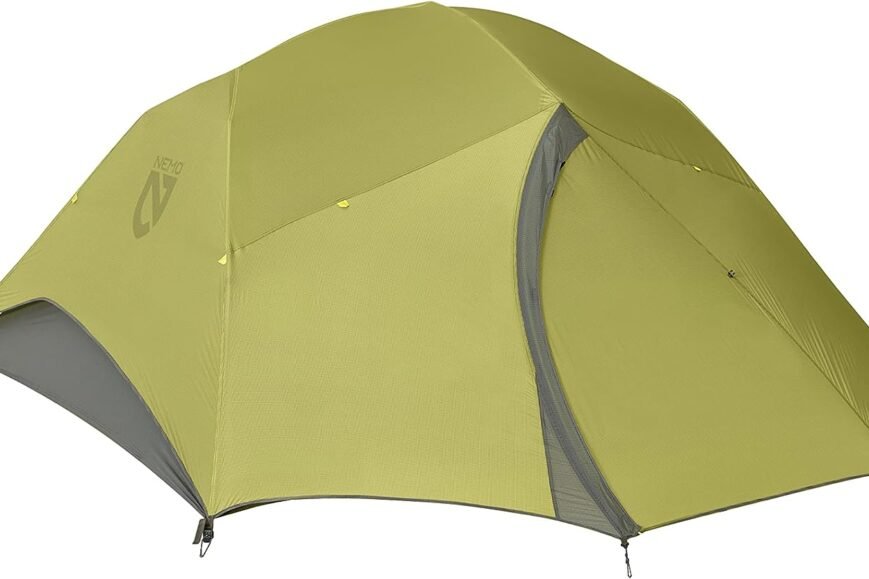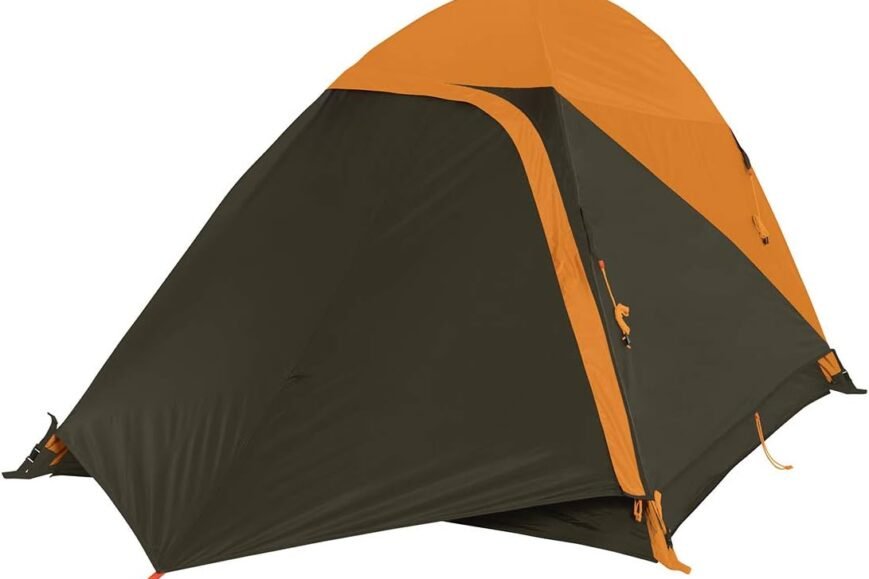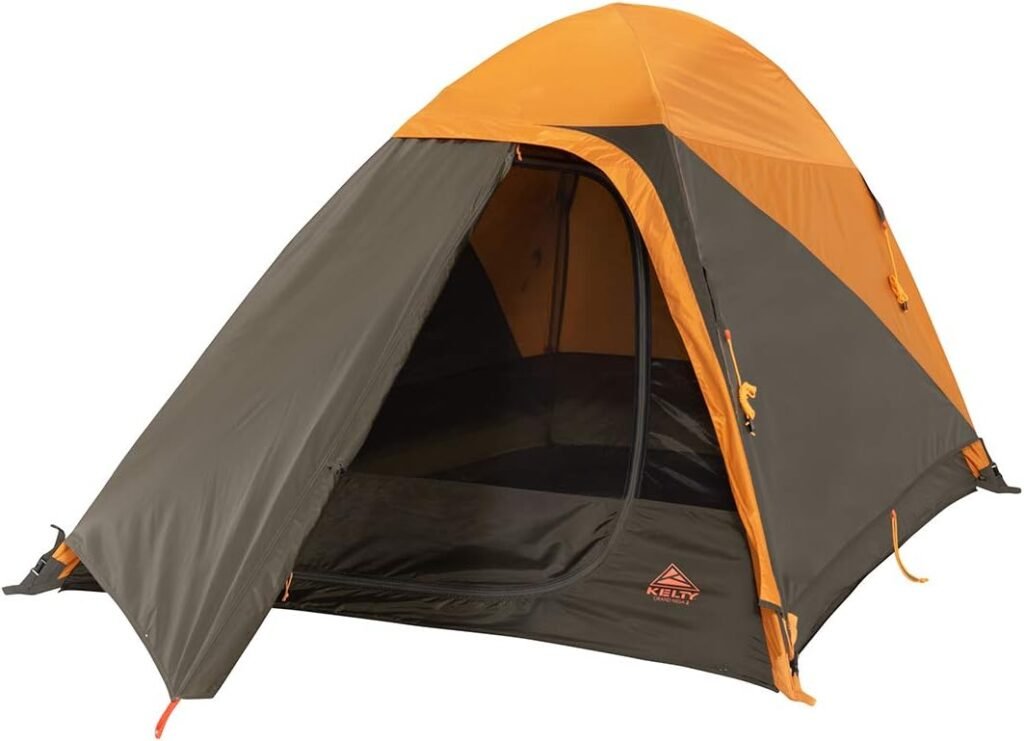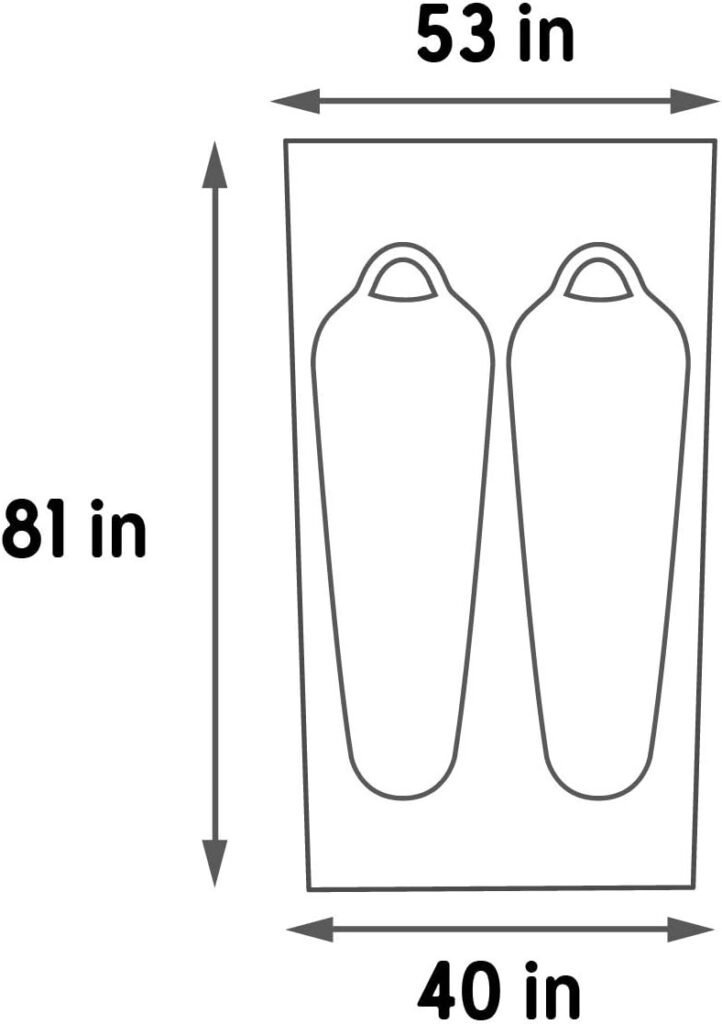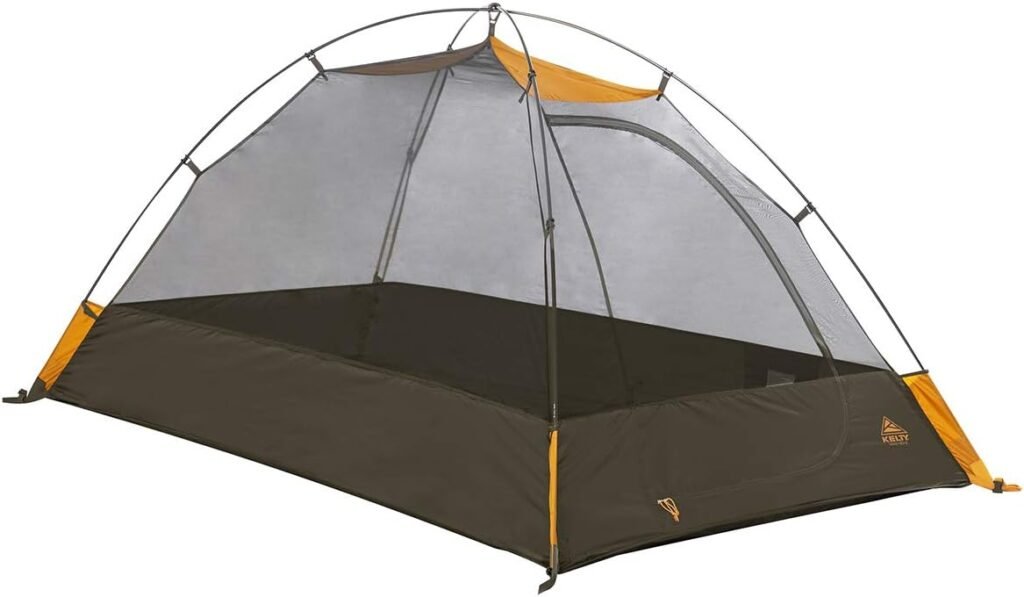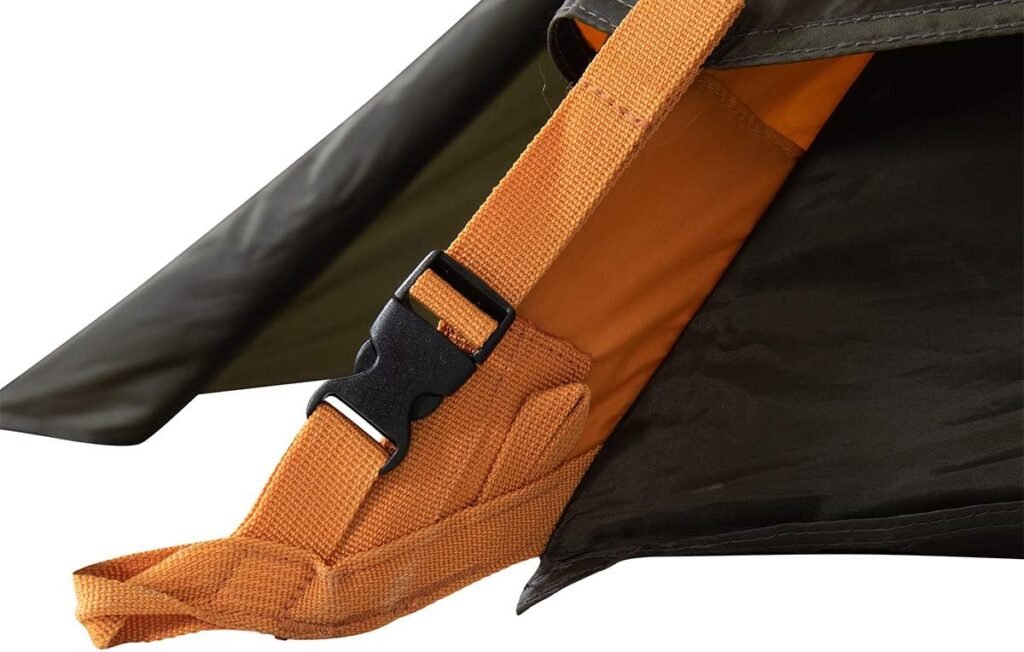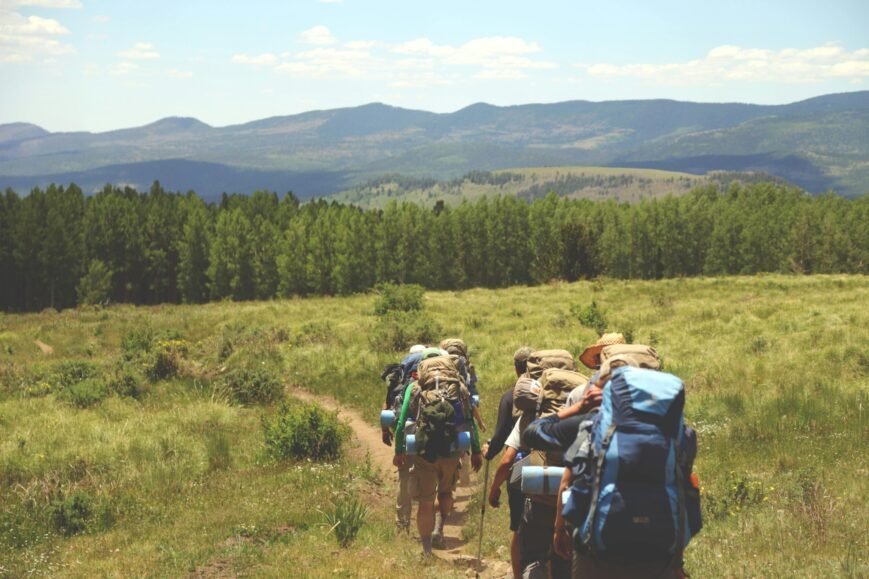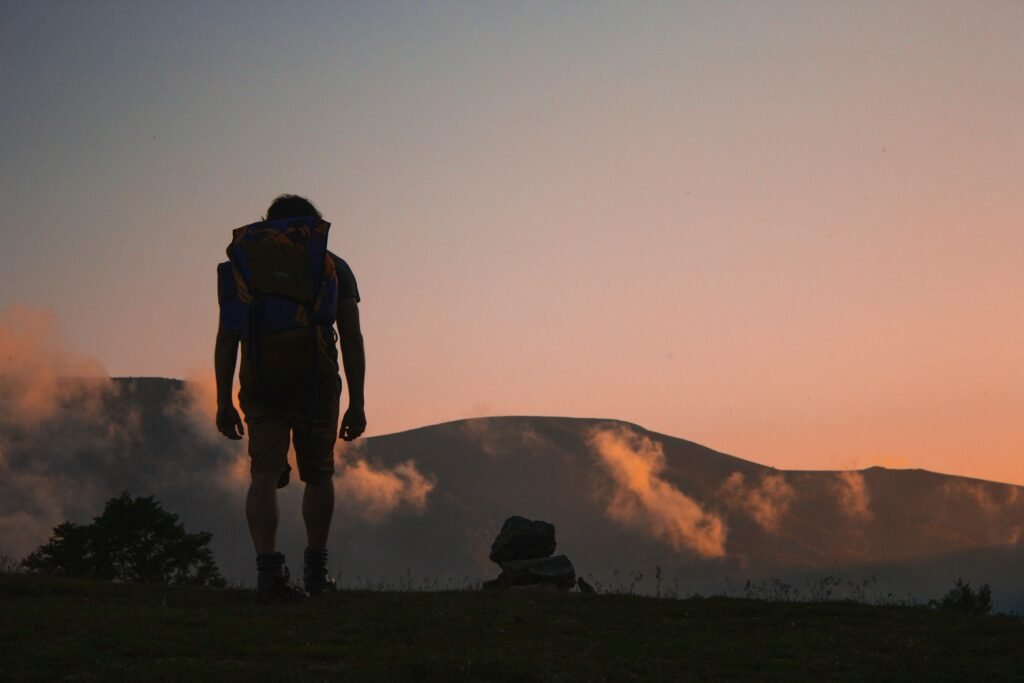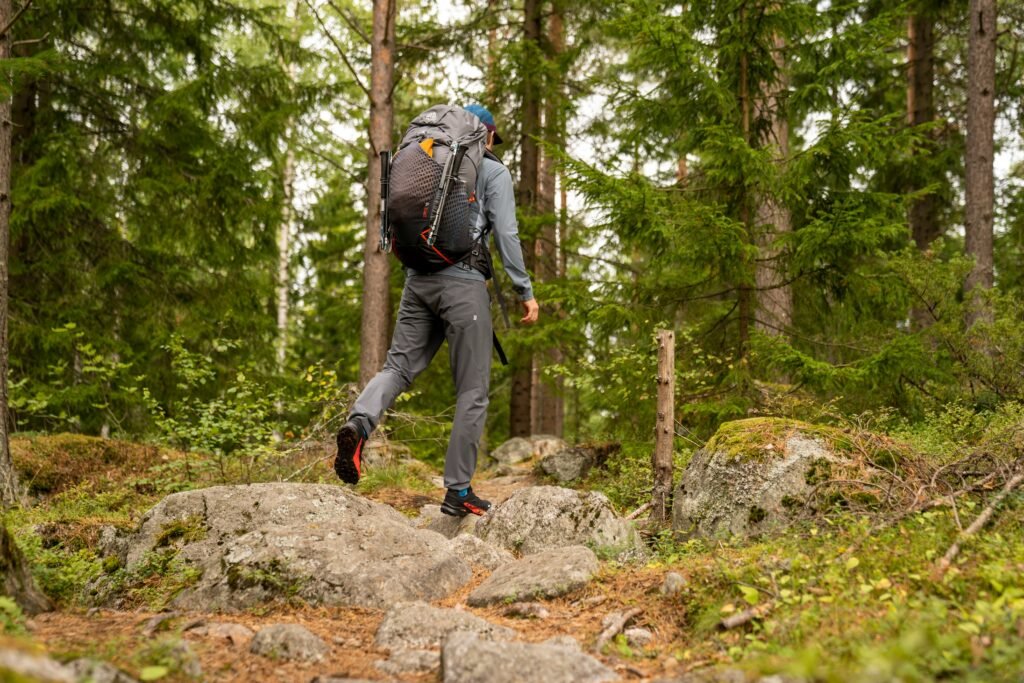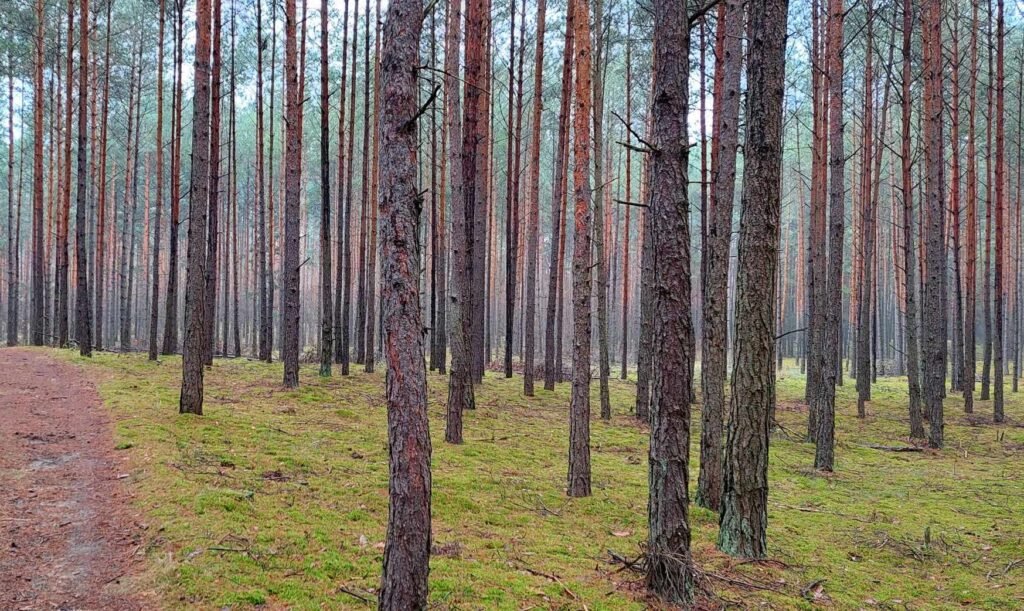Brief Overview
The Nemo Dagger Osmo is a cutting-edge 2-person backpacking tent that seamlessly blends innovative design, exceptional weather protection, and impressive versatility. As part of Nemo’s renowned Dagger line of high-performance shelters, the Dagger is engineered to provide a reliable and comfortable home-away-from-home for the modern outdoor adventurer. Now all this hype is great, but let’s dig in and see what this tent’s really all about.
Nemo Dagger Osmo
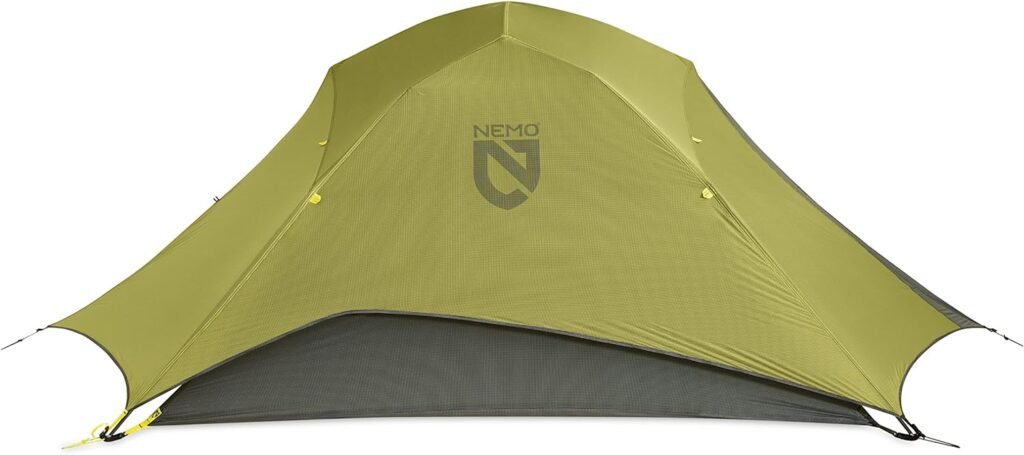
Specifications
- Capacity: 2-person
- Season: 3-season
- Weight: 3 lbs 14 oz (1.76 kg)
- Floor Dimensions: 90 x 50 inches (229 x 127 cm)
- Floor Area: 31.3 sq ft (2.91 sq m)
- Vestibule Area: 11.4 sq ft (1.06 sq m) + 11.4 sq ft (1.06 sq m)
- Peak Height: 42 inches (107 cm)
- Packed Size: 19.5 x 6.5 inches (50 x 17 cm)
- Fabric:
- Canopy: 15D Nylon Ripstop/ No-See-Um Mesh
- Fly: 15D Sil/PeU Nylon Ripstop (1200 mm)
- Floor: 30D PeU Nylon Ripstop (3000 mm)
First Impressions
Unboxing the Nemo Dagger 2 person tent, the immediate impression is one of quality and attention to detail. The tent arrives neatly packaged, with all components – poles, pegs, guylines, and accessories – carefully organized and easily accessible. This level of care in the packaging sets the stage for the overall craftsmanship and thoughtful design that we were hoping for.
Upon initial setup, the tent reveals a sleek and refined silhouette, with a distinctive Nemo aesthetic that combines form and function. The fabrics have a supple yet durable feel, hinting at the brand’s commitment to using high-quality materials. The color scheme, a blend of muted grays and soft blues, seamlessly blends with natural outdoor environments.
What We Like
One of the most impressive aspects of the Nemo Dagger Osmo is its innovative design and cutting-edge features. The tent’s use of the brand’s proprietary Osmo fabric, a lightweight and highly breathable material, is a standout feature that sets it apart from traditional backpacking shelters.
- Weather Protection: The Osmo fabric’s exceptional moisture-wicking and quick-drying properties, combined with its superb wind and water resistance, provide an unparalleled level of weather protection and breathability. This unique combination of performance attributes ensures that users stay dry and comfortable, even in challenging environmental conditions.
- Spaciousness: Another key strength of the Dagger Osmo is its impressive livability and overall spaciousness. Despite its relatively compact footprint, the tent offers a comfortable and airy interior, with 29 sq ft (2.7 sq m) of floor space and a peak height of 42 inches (107 cm). The well-designed vestibules (10 sq ft / 0.9 sq m each) further enhance the overall livability by providing ample storage space for gear and equipment.
- Thoughtful Features: The Dagger Osmo attention to detail and thoughtful features are also worthy of praise. From the convenient side-entry design and the color-coded pole system to the integrated media pockets and gear loft, every aspect of this tent has been carefully considered to provide a seamless and enjoyable user experience.
What We Don’t
While the Nemo Dagger is an exceptionally well-designed and innovative 2-person backpacking tent, there are a few aspects that may not appeal to all users.
- Price: One potential drawback is the tent’s relatively high price point, with an MSRP of $499.95. This cost may be a deterrent for budget-conscious outdoor enthusiasts, especially when compared to more affordable options in the backpacking tent market.
- Weight: Additionally, the Dagger’s weight, at 4 lbs 2 oz (1.9 kg), may be a consideration for ultralight enthusiasts who prioritize minimizing pack weight above all else. While the tent’s weight is still respectable for its class, it may not be the optimal choice for those seeking the absolute lightest shelter possible.
- Maintenance: Finally, the Dagger’s unique Osmo fabric, while offering exceptional performance, may require some additional care and maintenance compared to more traditional tent materials. Users who are unfamiliar with this type of specialized fabric may need to familiarize themselves with the recommended cleaning and storage procedures to ensure the long-term durability of the tent.
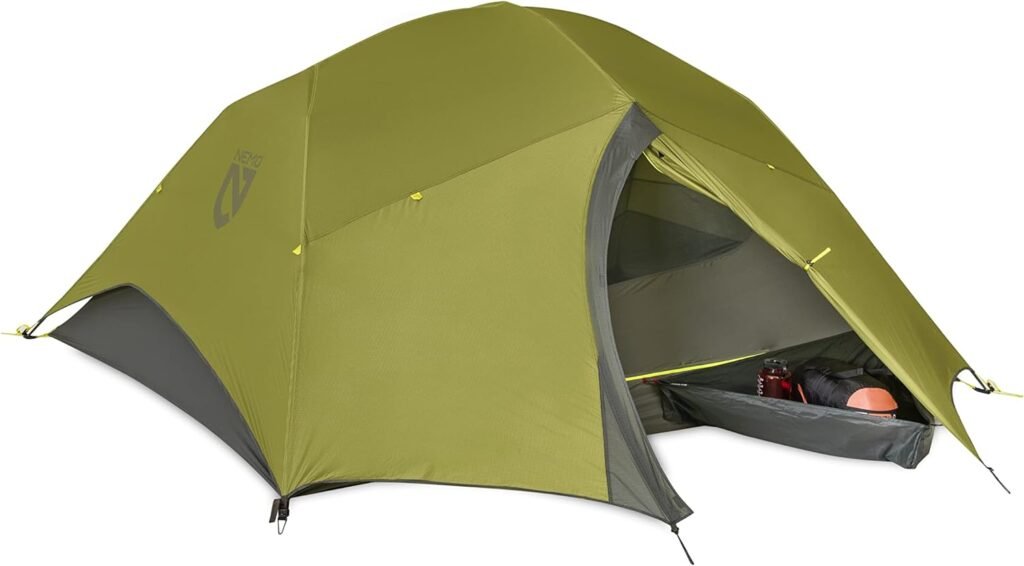
The Specs
Key Features:
- Design: The Nemo Dagger Osmo features a classic dome-style architecture with a side-entry configuration, which provides easy access and a streamlined silhouette. The tent’s use of the brand’s proprietary Osmo fabric is a standout design element that sets it apart from traditional backpacking shelters.
- Fit: The Dagger is designed to accommodate two people comfortably, with a floor area of 29 sq ft (2.7 sq m) and a peak height of 42 inches (107 cm). The tent’s spacious and airy interior, combined with its thoughtful layout, ensures a comfortable living space for both occupants and their gear.
- Materials: The tent’s body is constructed from Nemo’s innovative Osmo fabric, a lightweight and highly breathable material that offers superior wind and water resistance. The rainfly is made from a 30 Denier (30D) nylon with a silicone and polyurethane coating, providing reliable protection against the elements.
- Dimensions: The Nemo Dagger has a packed size of 18 x 6 inches (46 x 15 cm) and measures 88 x 52 inches (224 x 132 cm) when fully set up.
- Convenient Features: The tent features two large vestibules (10 sq ft / 0.9 sq m each) for additional storage space, as well as integrated media pockets and a gear loft for organizing small items. Nemo also includes several interior and exterior loops for attaching additional accessories.
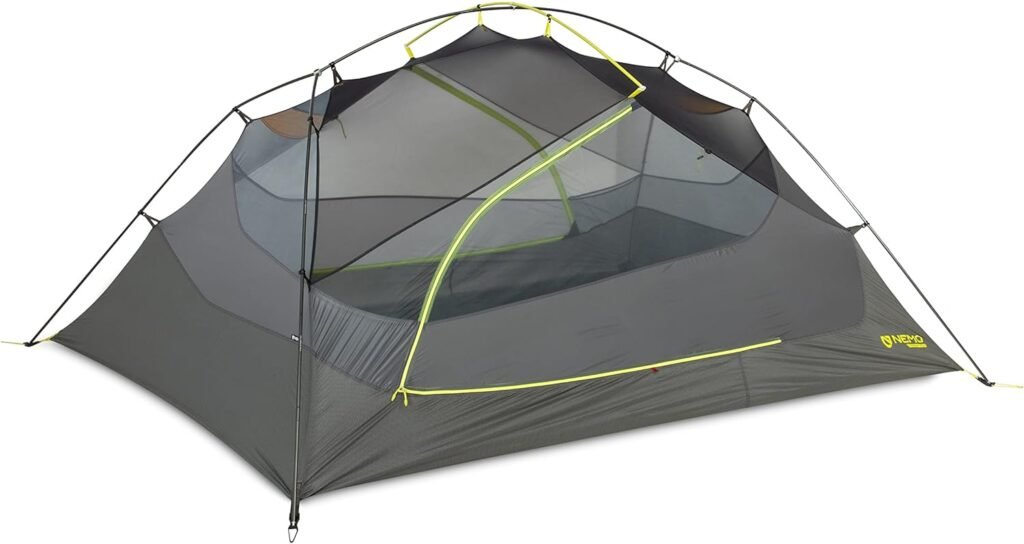
Overall Performance
Weatherproofing
The use of the proprietary Osmo fabric, combined with the tent’s thoughtful design elements, such as the fully taped seams and adjustable vents, provides exceptional protection against heavy rain, strong winds, and light snow. This level of weatherproofing makes it a reliable choice for extended backcountry trips and challenging environments.
Breathability
Nemo’s Osmo fabric is a standout feature in terms of breathability and moisture management. The fabric’s exceptional moisture-wicking and quick-drying properties, coupled with its superb wind and water resistance, help to maintain a comfortable and dry sleeping environment, even in warm and humid conditions.
Durability
There is a clear use of high-quality materials and reinforced components contributes to its overall ruggedness and longevity. While the specialized Osmo fabric may require some additional care and maintenance, the tent is built to withstand the rigors of extended backcountry use and occasional rough handling without compromising its structural integrity.
Ease of Use
Pitching
Setting up the Nemo Dagger is a relatively straightforward process, thanks to the color-coded pole system and intuitive clip-and-go design. The tent’s freestanding structure also means it can be pitched without the need for staking, which can be particularly useful in areas with challenging ground conditions.
Breakdown
Packing up the Dagger is a simple task, with a well-designed storage sack and helpful compression straps for efficient packed volume. The tent can be quickly disassembled and stored away, making transitions between campsites a hassle-free experience.
Best Uses
Seasonal Use
The Nemo Dagger Osmo is designed for reliable three-season performance, with the ability to handle a wide range of weather conditions, including heavy rain, strong winds, and light snow. This versatility makes it a suitable choice for spring, summer, and fall backpacking and camping trips.
Environment
The tent’s freestanding design, combined with its exceptional weatherproofing and breathability, make it a versatile choice for a variety of environments, from forested areas to exposed alpine settings. Its stability and compact footprint also render it a reliable option for use in crowded backcountry campsites or when space is limited.
Comparison to Other Tents
When compared to other premium 2-person backpacking tents, the Nemo Dagger Osmo stands out for its innovative design, exceptional weather protection, and impressive breathability.
- MSR Hubba Hubba 2P: One tent that warrants comparison is the MSR Hubba Hubba , a well-established and highly capable option. While the Hubba Hubba may offer a slightly more streamlined and user-friendly design, the Dagger Osmo surpasses it in terms of overall weatherproofing, breathability, and livability, making it a more suitable choice for extended expeditions and challenging environments.
- Big Agnes Copper Spur HV UL2: Another contender is the Big Agnes Copper Spur HV UL2, a lightweight and feature-rich backpacking tent. While the Copper Spur HV UL2 may provide a more spacious interior and additional convenient features, the Dagger delivers superior weather protection and breathability, attributes that are particularly important for those venturing into remote or exposed areas.
- Hilleberg Nallo 2: Compared to the Hilleberg Nallo 2, a premium expedition-grade tent, the Dagger may not offer the same level of ruggedness and extreme weather performance. However, the Dagger’s innovative design, impressive versatility, and exceptional livability make it a compelling choice for the discerning outdoor enthusiast who values a balance of weight, space, and functionality.
Our Final Thoughts
The Nemo Dagger Osmo is a true standout in the world of 2-person backpacking tents, offering a unique blend of innovative design, exceptional weather protection, and unparalleled breathability. Engineered for the modern outdoor adventurer, this tent sets a new benchmark for what a high-performance backpacking shelter can and should be.
One of the most impressive aspects of the Dagger 2 person tent is its use of Nemo’s proprietary Osmo fabric, a cutting-edge material that redefines the boundaries of what’s possible in terms of moisture management and weather resistance. The fabric’s exceptional breathability, combined with its superb wind and water resistance, ensures that users stay dry and comfortable, even in the most challenging environmental conditions.
Another key strength of the Dagger is its impressive livability and overall spaciousness. Despite its relatively compact footprint, the tent offers a comfortable and airy interior, with ample room for two people and their gear. The well-designed vestibules further enhance the overall livability by providing generous storage space for additional equipment and personal items.
While the Dagger ‘s high price point and slightly heavier weight may be a consideration for some users, the tent’s innovative features, exceptional performance, and thoughtful design justify the investment for those who demand the best in backpacking gear. The attention to detail and user-friendly features, such as the convenient side-entry design and the color-coded pole system, further enhance its appeal for a wide range of outdoor enthusiasts.
Overall, the Nemo Dagger Osmo 2P is a truly exceptional 2-person backpacking tent that sets a solid standard for innovation, weather protection, and breathability.
FAQ
Q. What makes the Nemo Dagger Osmo 2P stand out from other 2-person backpacking tents?
The Nemo Dagger Osmo stands out due to its innovative design, use of proprietary Osmo fabric, exceptional weather protection, and impressive breathability. The tent’s thoughtful features, such as the side-entry design, color-coded pole system, and integrated media pockets, further enhance its appeal.
Q. How does the Osmo fabric contribute to the tent’s performance?
The Osmo fabric is a lightweight and highly breathable material that offers superior wind and water resistance. Its exceptional moisture-wicking and quick-drying properties ensure that users stay dry and comfortable, even in challenging environmental conditions.
Q. Is the Nemo Dagger suitable for ultralight backpacking?
While the Dagger Osmo 2P’s weight of 4 lbs 2 oz (1.9 kg) is respectable for its class, it may not be the optimal choice for ultralight backpacking enthusiasts who prioritize minimizing pack weight above all else. However, its innovative features and exceptional performance make it a compelling option for those who value a balance of weight, space, and functionality.
Q. How does the Nemo Dagger compare to other premium 2-person backpacking tents?
When compared to other premium 2-person backpacking tents, the Nemo Dagger Osmo stands out for its innovative design, exceptional weather protection, and impressive breathability. It surpasses the MSR Hubba Hubba in terms of weatherproofing and livability, and delivers superior weather protection and breathability compared to the Big Agnes Copper Spur HV UL2.
Q. What are the recommended care and maintenance procedures for the Osmo fabric?
To ensure the long-term durability of the Osmo fabric, users should follow the recommended cleaning and storage procedures provided by Nemo. This may include gentle hand washing with mild soap, avoiding harsh chemicals, and storing the tent in a cool, dry place when not in use.
![]()

